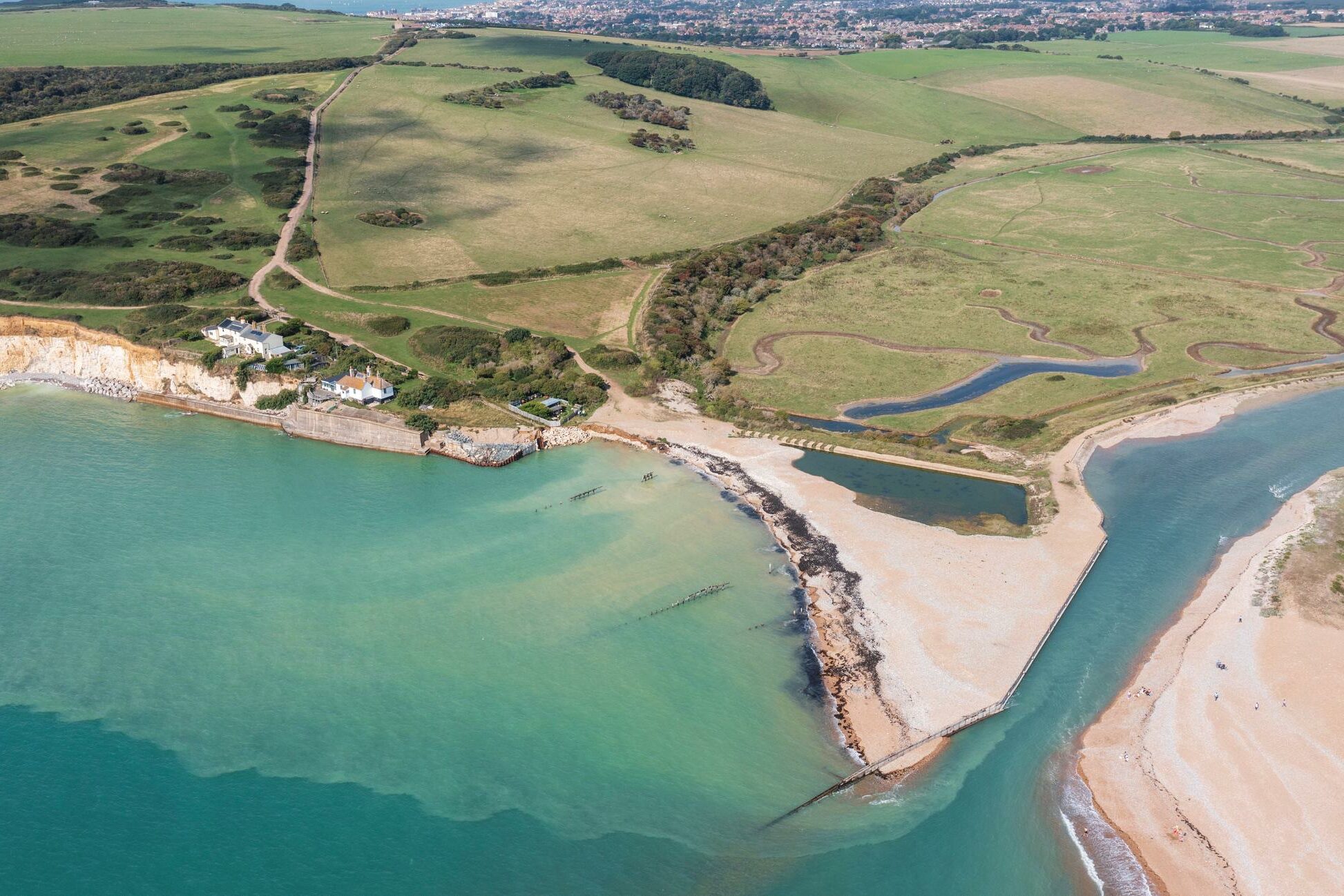
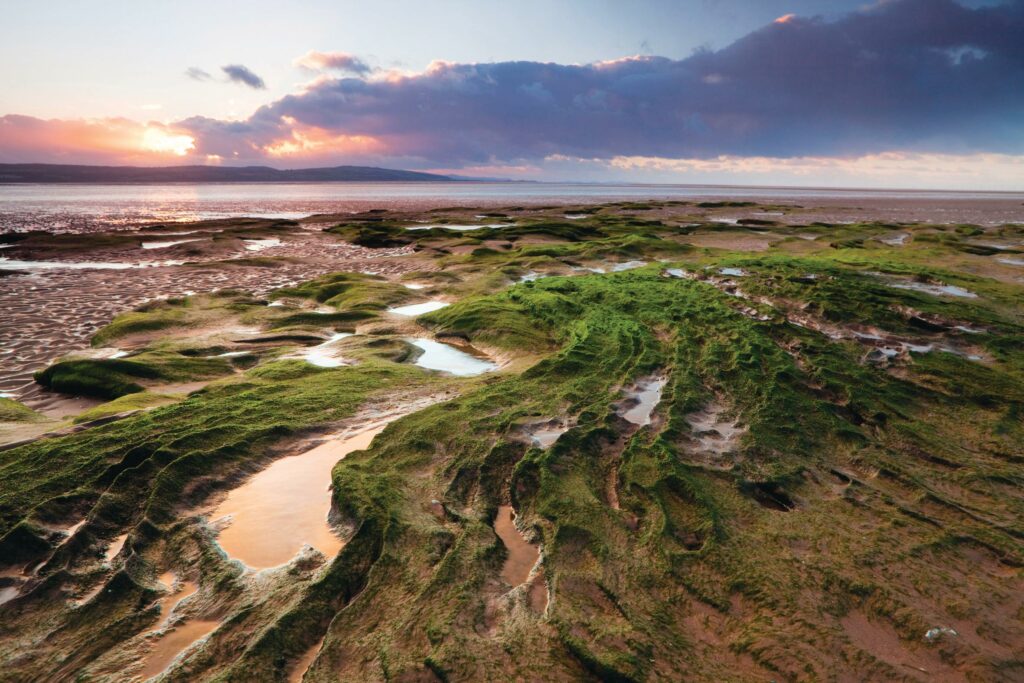
Top 10 best beaches
Whether you dream of rockpools, buried treasure, soothing shores, wild waves, drifting dunes or an island escape, we have the beach for you. Here are the UK’s seaside jewels, from Devon to the Hebrides
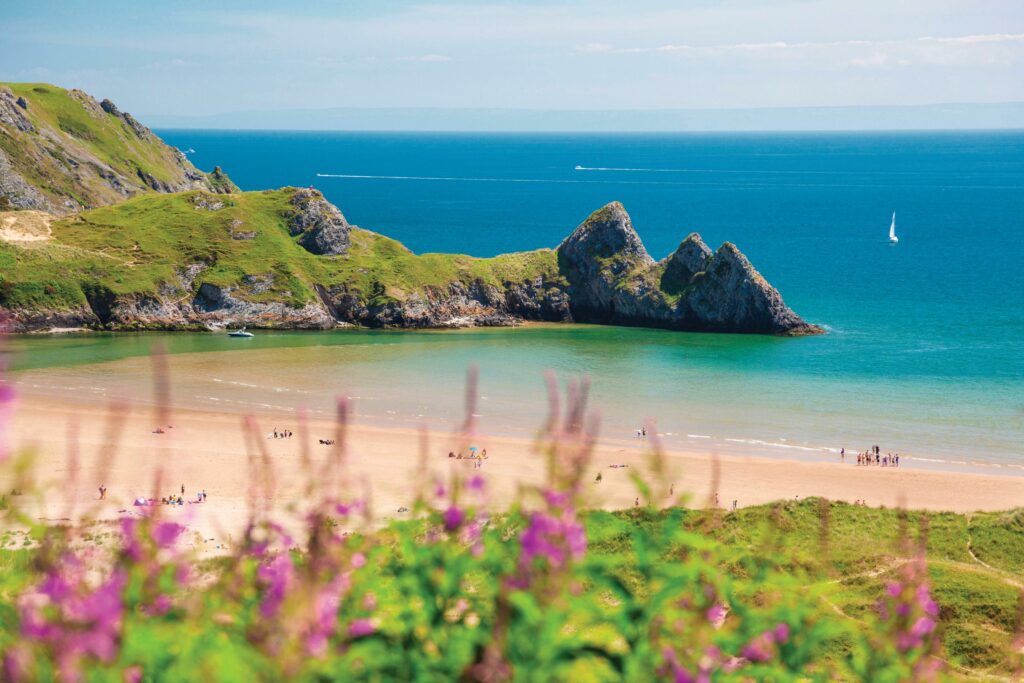
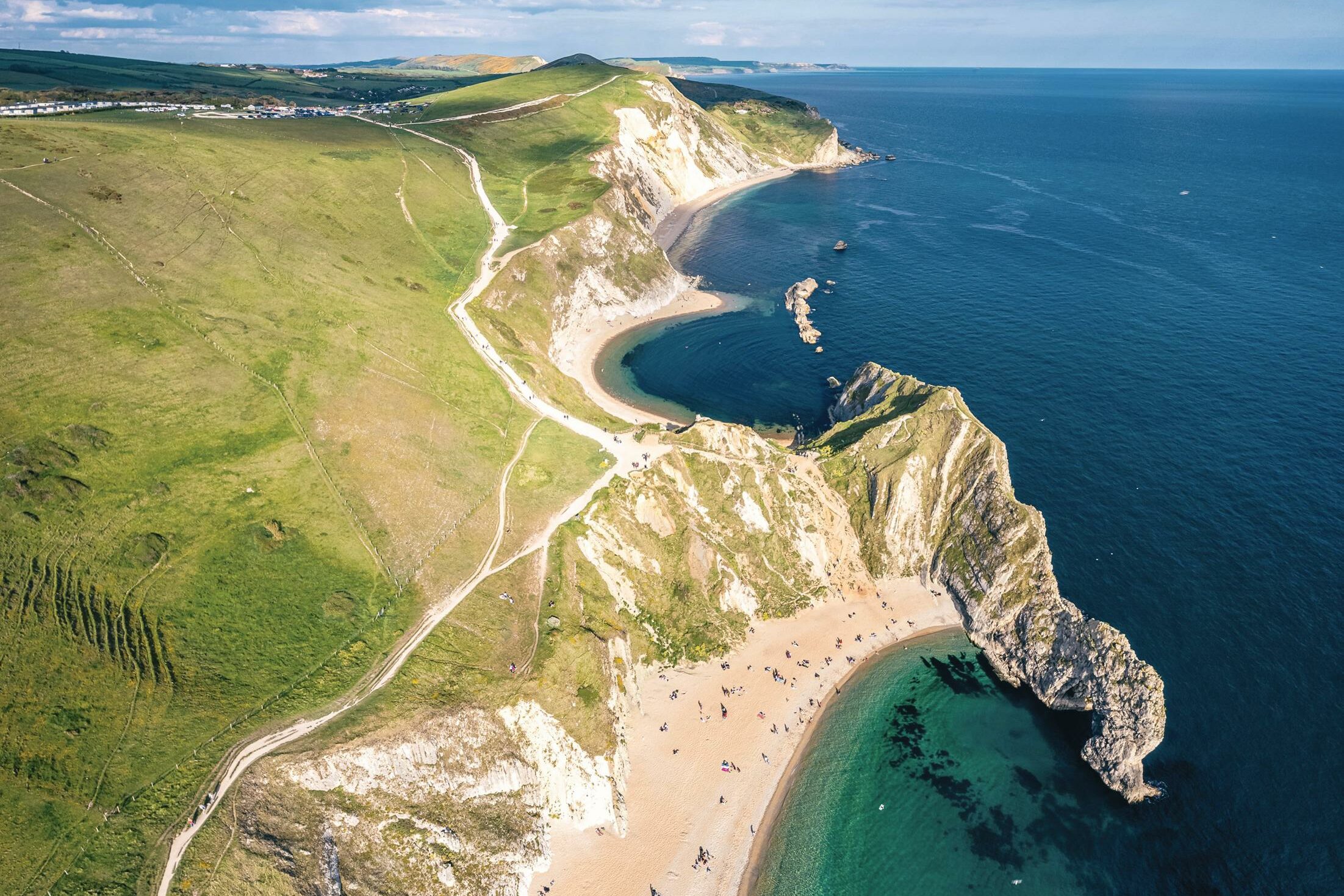
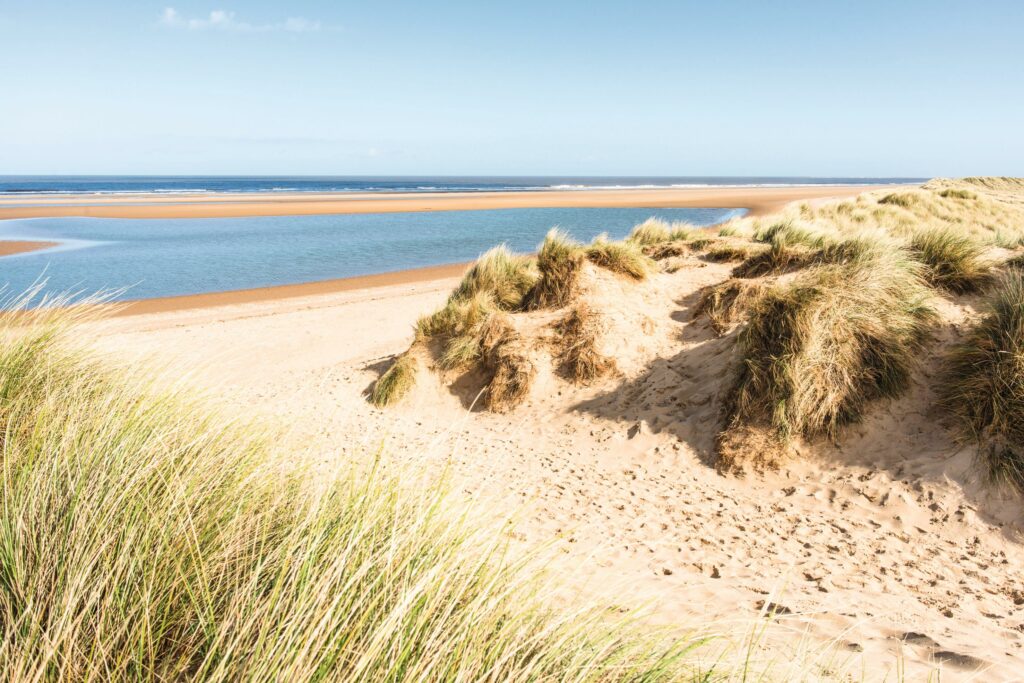
1 Oldshoremore Beach, Sutherland
Remote and ravishing
Best for… getting away from it all
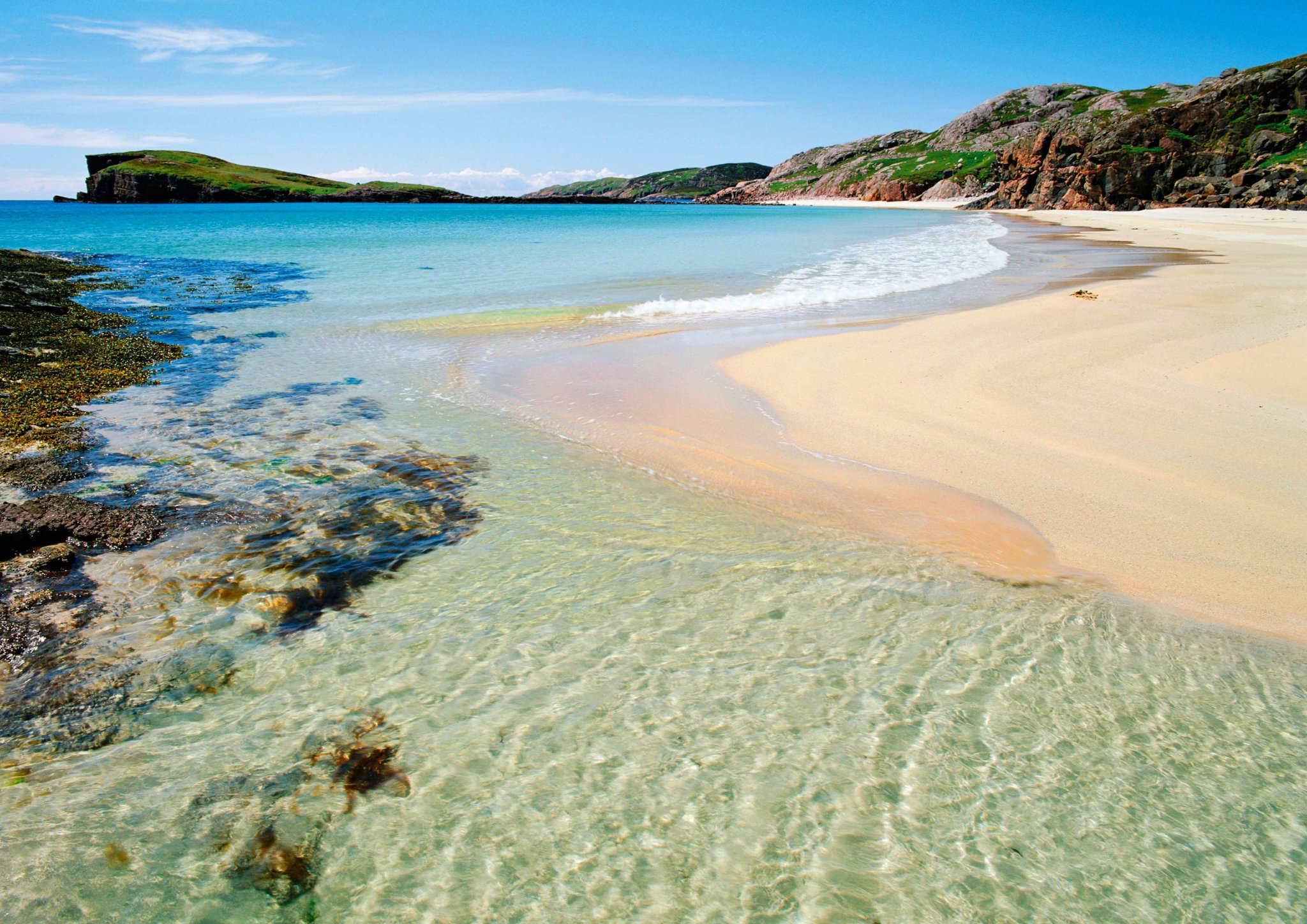
Also known by its Scots Gaelic name, Am Meallan, this beach takes some effort to get to but rewards every step of the journey. Located almost as far north-west as you can go on mainland Scotland – in one of the least populated parts of the country – it’s a gem of a beach. Crushed seashells and stones have produced sand the colour of light gold, which forms a narrow sweeping arc around a small bay. Behind lies the hamlet of Oldshoremore – a scattering of white-painted houses in a sea of green.
An added delight is the grass-and-heather-clad tidal island of Eilean na h-Aiteig (though do make sure you don’t get stuck on it). And there’s a chance you could be joined on the beach by placid Highland cattle – for who’s to say that cows don’t appreciate a little beauty, too?
Useful info
Given how out of the way the location is, there’s a surprisingly good array of accommodation nearabouts. The closest is Oldshoremore Retreats , a hop and a skip from the shore, which offers a cottage, fancy pods and a budget-minded tipi. oldshoremore retreats.co.uk
Daily buses run to Kinlochbervie from Lairg and Inverness. Then it’s a pleasant 2.5-mile walk along a quiet lane.
There’s a little car park with toilets just behind the beach. The nearest refreshments are in Kinlochbervie where the Quay House provides eat-in and take-away services. facebook.com/thequayhouseKLB
2 Lunan Bay, Tayside
Stormy treasure
Best for… finding gems
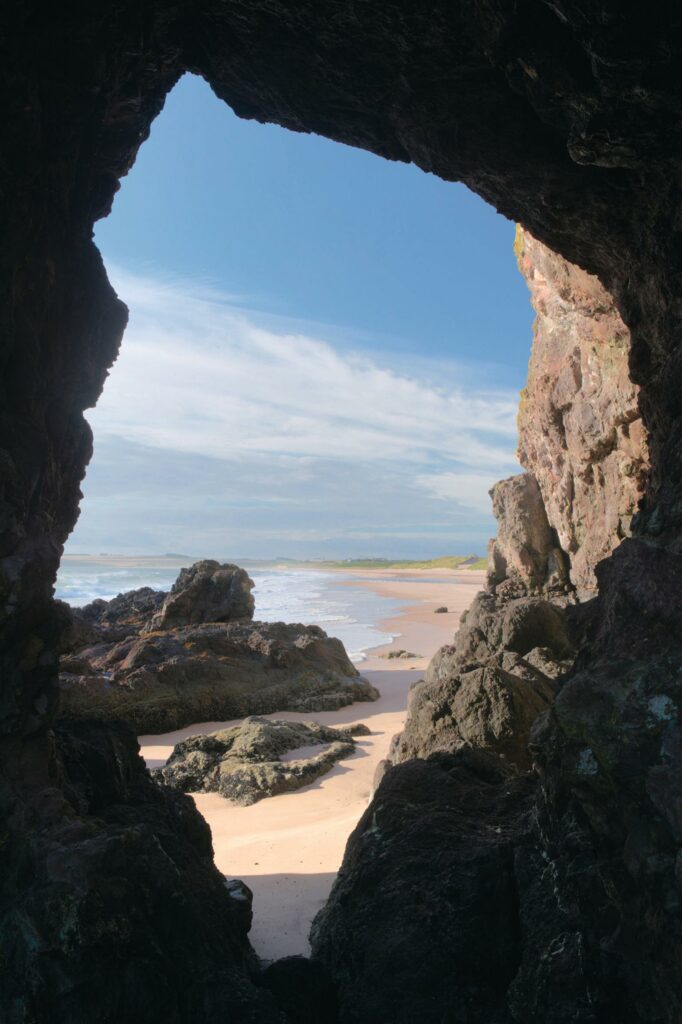
Stormy weather and beaches usually make for unhappy bedfellows. Not so at Lunan Bay on Scotland’s east coast. Go there after a storm and you might be lucky enough to come across Scottish agate among other ornamental gem stones. There’s plenty of beach to look for them in as well – over two miles of sandy strand running the length of the bay with low cliffs at both ends.
Popular with surfers, Lunan’s brisk North Sea waves once brought rather less welcome visitors: for centuries Norsemen came here bearing swords and interesting ideas on property ownership. Today, the beach is overlooked by the ruins of the Red Castle, built in the 12th century for King William the Lion to ward off Viking raids. Once a dread-inspiring sight, time has reduced it to a picturesque keep and a section of curtain wall.
Useful info
The 30 bus will take you from Montrose railway station. stagecoachbus.com There’s a car park between the village and beach.
Lunan House Hotel is ideally placed for the beach; it also has a campsite, a shop and “Imrie’s Bar & Grill”. lunan.scot
3 Durdle Door, Dorset
Jurassic wonder
Best for… iconic scenery
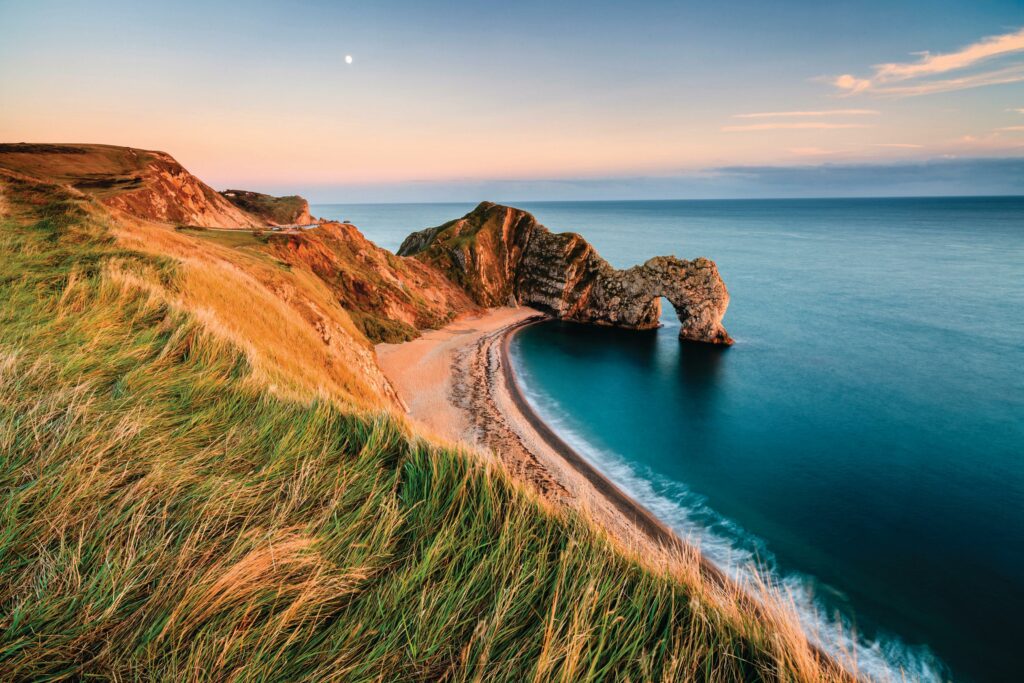
One of the country’s most recognisable natural landmarks, Durdle Door is part of the magnificent Jurassic Coast, England’s first natural UNESCO World Heritage Site. The immense limestone arch was formed by the power of the sea, a fact reflected in its name – ‘Durdle’ comes from the old English ‘thirl’, meaning to drill or pierce.
Unsurprisingly, the world-famous arch has appeared in plenty of films and television dramas – among them Nanny McFee, Wilde, Far from the Madding Crowd and Doctor Who. The shingle beach and chalk cliffs have also set the scene for numerous music videos, including ones featuring Cliff Richard, Tears for Fears and Billy Ocean.
The only downsides to the beach are the strong undertow (and absence of lifeguards) and its exceptional popularity, especially in the school holidays. So try to come off-season or take the left-hand path from the car park down to the neighbouring Man o’ War beach instead.
Useful info
It’s a 10-minute walk to the beach along cliff-tops and then down 143 steps from the entrance by the Durdle Door Holiday Park. The park has a range of accommodation, a campsite and The Man o’ War Bar & Restaurant – all open from March to October. durdledoor.co.uk
Be warned that the car park often becomes full during the summer with no other parking nearby, so it’s more savvy to arrive by bus, taking the 30, 31 or X50 from Wool railway station.
Useful info
The 30 bus will take you from Montrose railway station. stagecoachbus.com There’s a car park between the village and beach.
Lunan House Hotel is ideally placed for the beach; it also has a campsite, a shop and “Imrie’s Bar & Grill”. lunan.scot
4 Harlech Beach, Gwynedd
Dreamy dunes
Best for… imposing castles
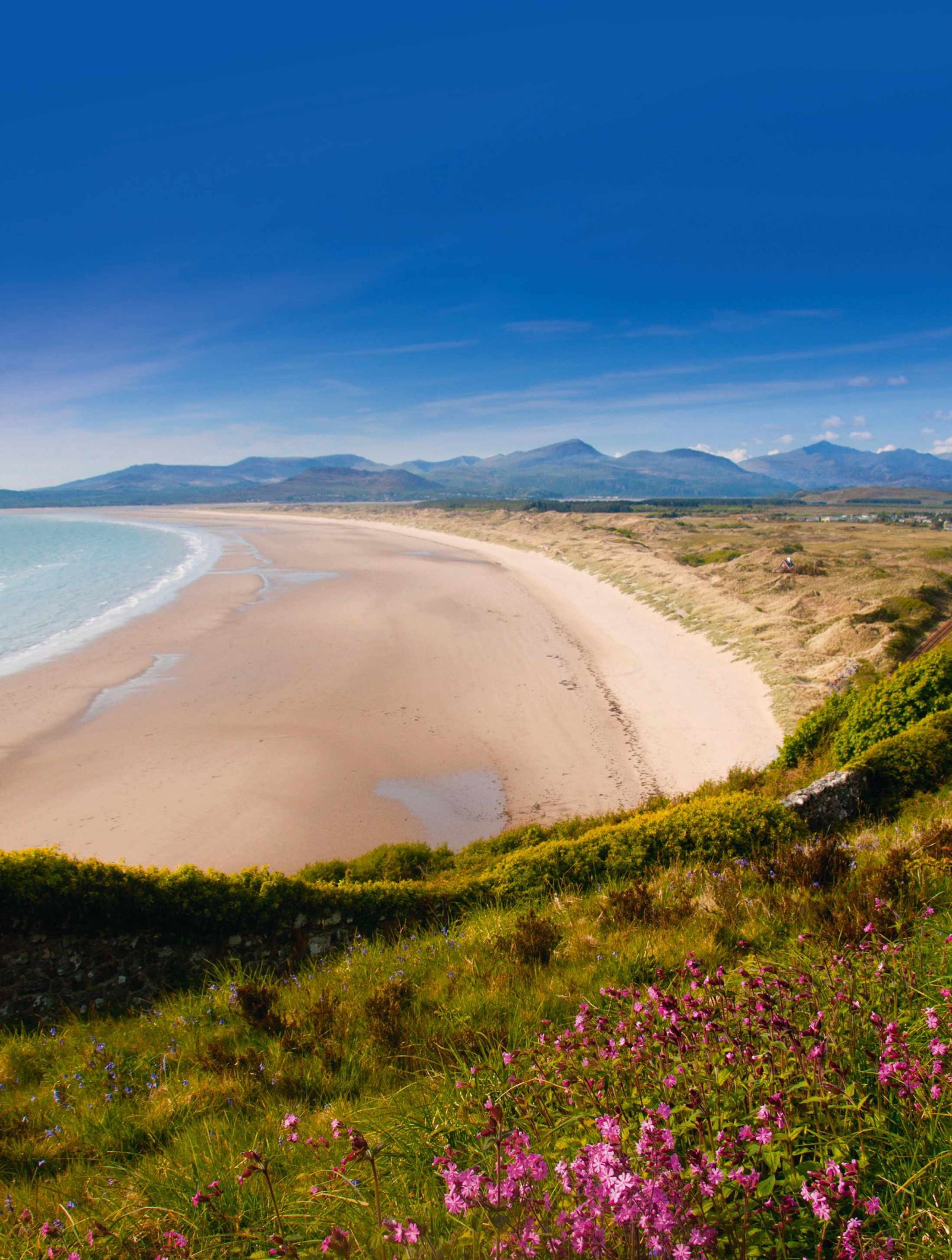
King Edward I of England is understandably not greatly loved by the Welsh, whose nation he rather rudely annexed. One of the string of fortresses he had built to tighten his grip on the country was at Harlech.
But it must be said, standing on a crag above the beach, the castle (now a UNESCO World Heritage Site) looks incredibly dramatic. And its little garrison had an absolutely sumptuous view: the lofty grandeur of Snowdonia in one direction and four miles of gleaming sand in the other.
At the northern end of the beach, visitors can enjoy Morfa Harlech National Nature Reserve and its mighty sand dunes. They’re becoming mightier every year due to longshore drift and are the only dunes in Wales that are increasing in size.
In summer, there’s a chance to see another rare sight: the leatherback turtle. They’re drawn here to feed on the jellyfish that drift along this stretch of coastline. Back in 1988, an enormous 1.5m-long turtle was washed up on the beach (sadly having become entangled in discarded fishing equipment), so keep an eye out for one: you may be lucky.
cadw.gov.wales/visit/places-to-visit/harlech-castle
Useful info
Harlech has several cafés including Caffi Castell on Fford Pen Llech, which claims to be “the world’s steepest street”. Thankfully, the café is at its foot. cafficastell.co.uk
Dol Aur B&B is smart and comfy. dolaur.com
Harlech railway station is a 10-minute walk from the beach, and there’s a car park and toilets on Fford Glan Mor.
5 Holkham Beach, Norfolk
Wild shores
Best for… HORSE RIDING
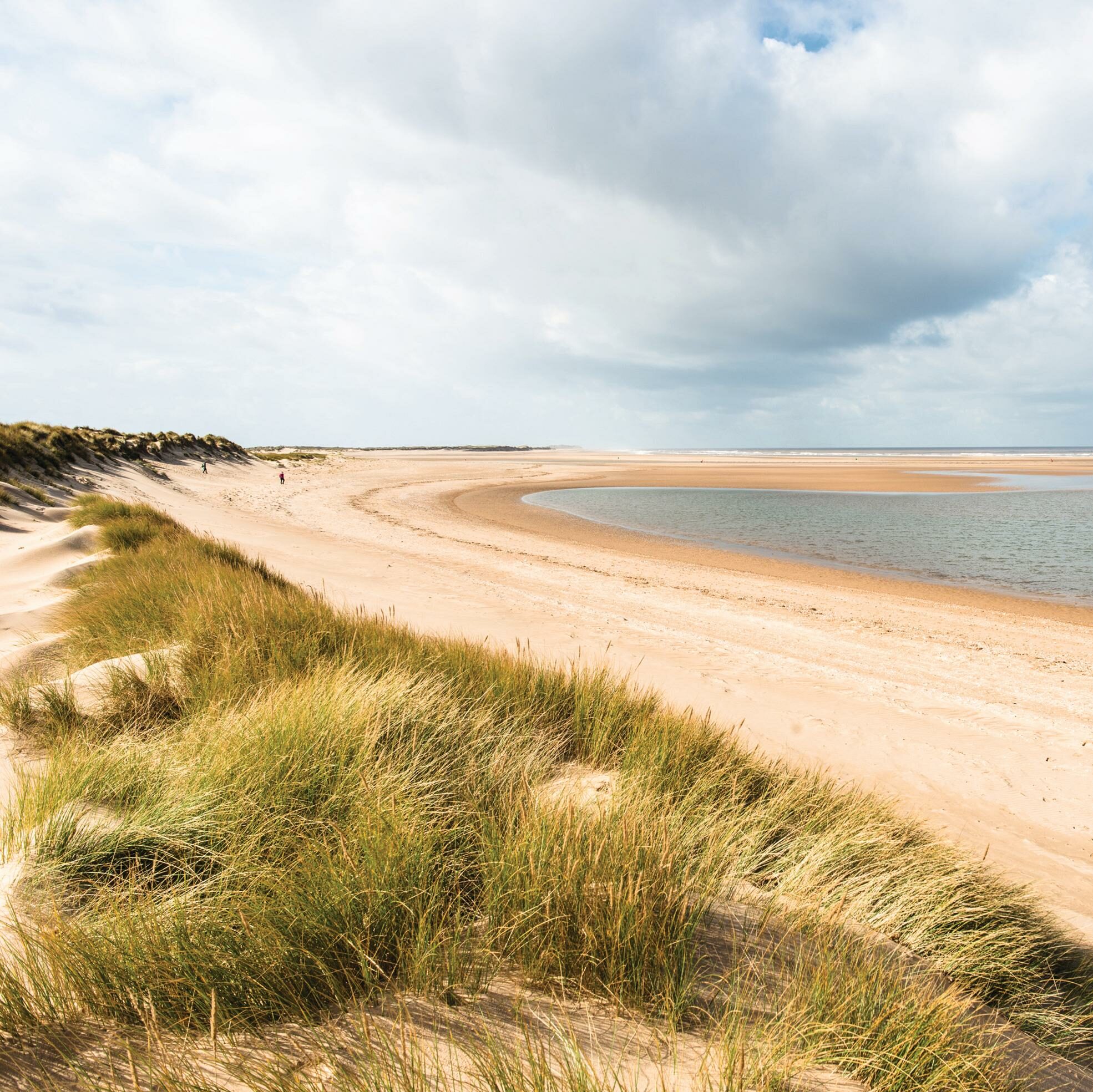
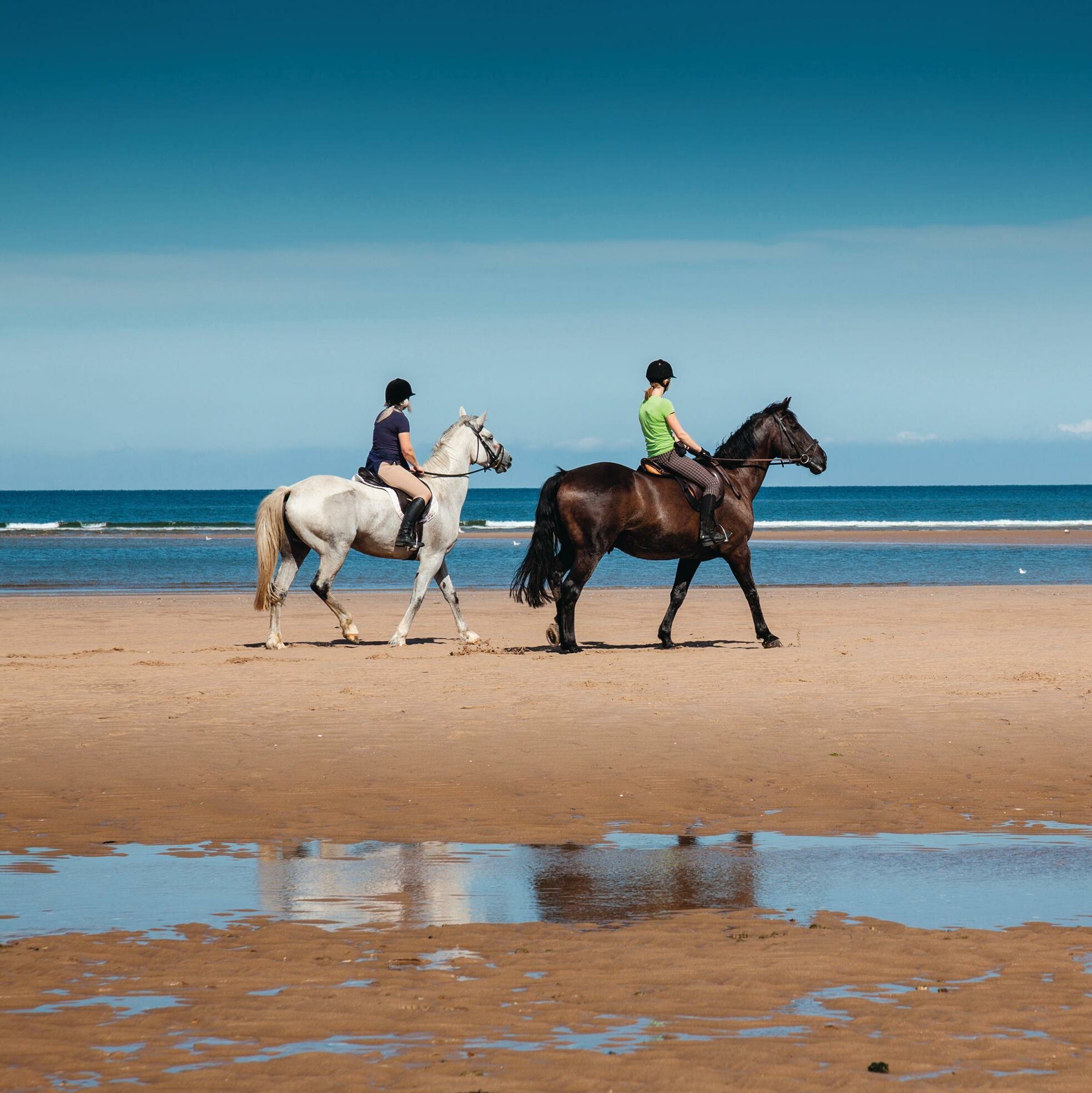
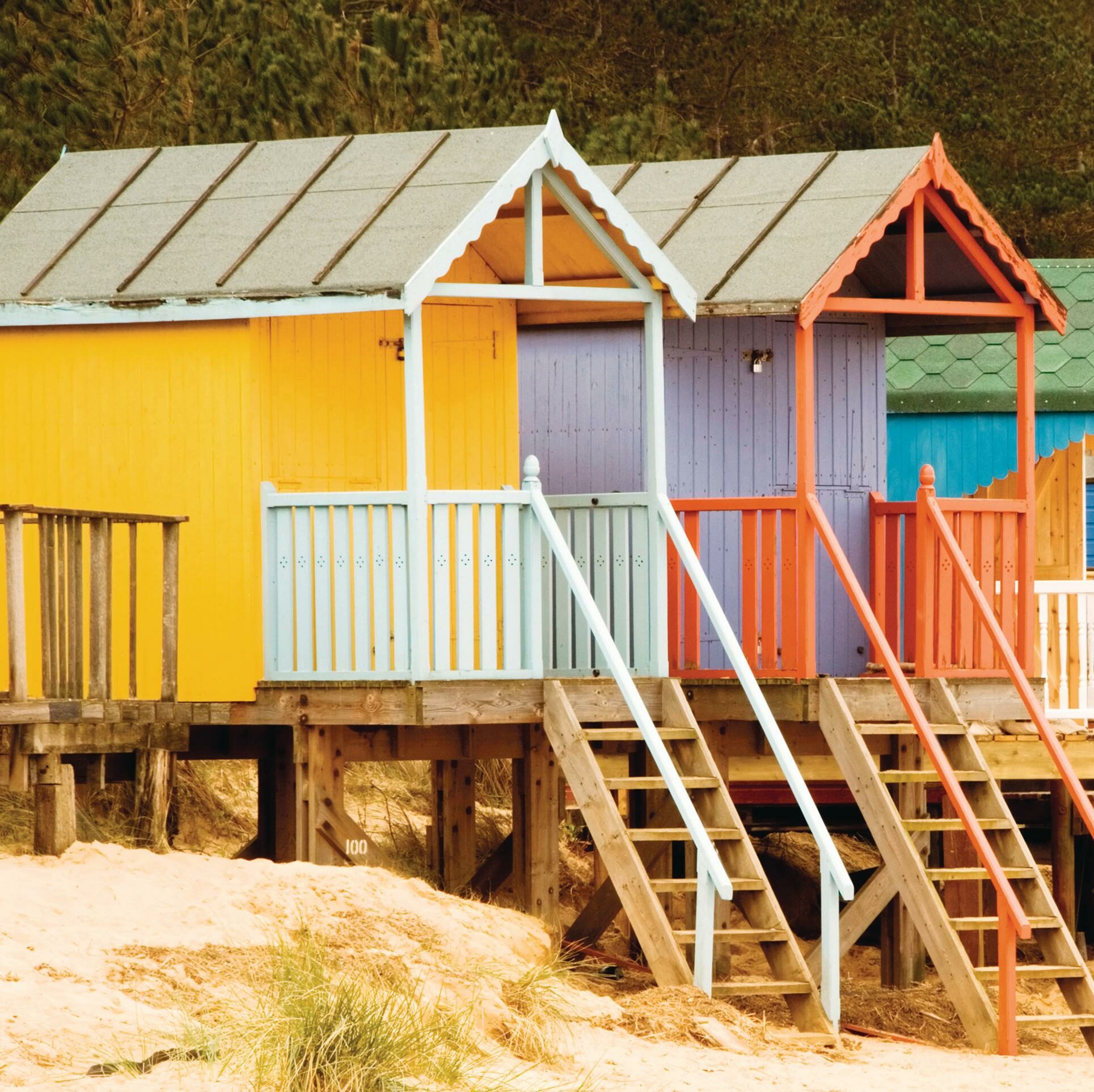
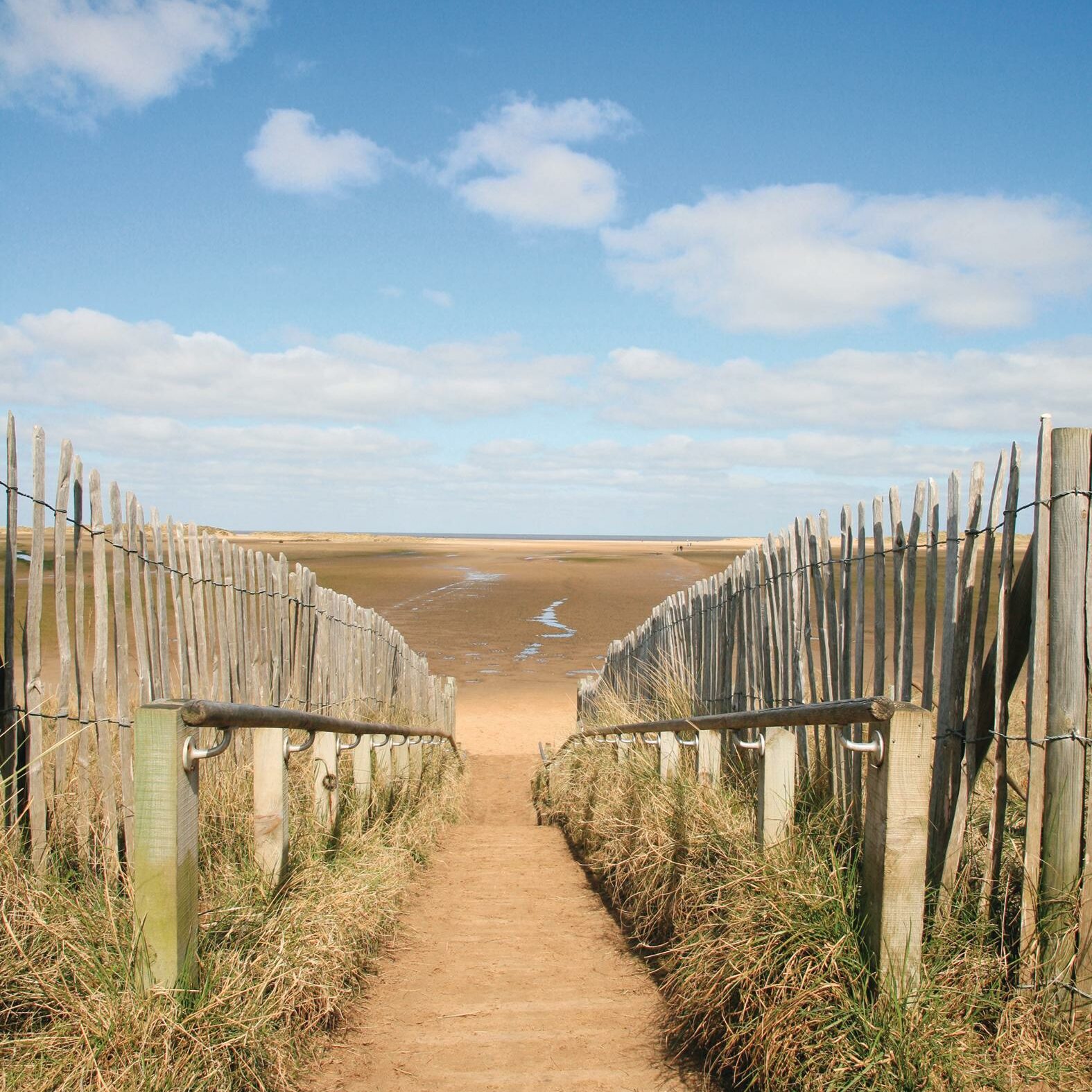
A seemingly endless expanse of sand, backed by a fine combination of pine forest and sand dunes – welcome to Holkham Beach, a delightful section of one of England’s biggest national nature reserves.
A little away from the crowds that throng Wells-next-the-Sea, Holkham is home to a pleasing variety of wildlife. Its dunes – some created by the winds as recently as the 1960s – are home to ground-nesting oystercatchers and ringed plovers. Around them, flowers such as marsh helleborine, rue-leaved saxifrage and ploughman’s spikenard flourish. Specially constructed boardwalks keep the dunes and their inhabitants safe.
Look out for little terns hunting fish in the shallows. And if you’re lucky enough to have access to a horse, you can ride one along the beach, as long as you respect other beach-users and steer clear of wildlife habitats.
Should you tire of the sand, you can visit the grand Palladian-style Holkham Hall. holkham.co.uk
Useful info
The amazingly architectural Lookout café on the edge of the reserve not only serves drinks, sandwiches and light bites (with a commendable emphasis on reducing waste and plastic), it also offers fantastic views of the beach and even binoculars for birdwatching.
The 36 Coastliner bus connects Holkham with Kings Lynn station and Fakenham. And there’s a car park close to the beach on Lady Anne’s Drive.
You can stay (and indeed dine) at Holkham’s Victoria Inn. holkham.co.uk
Or there are plenty of eating and accommodation options at nearby Wells-next-the-Sea.
6 Three Cliffs Bay, Gower
Picture perfect
Best for… beach walks
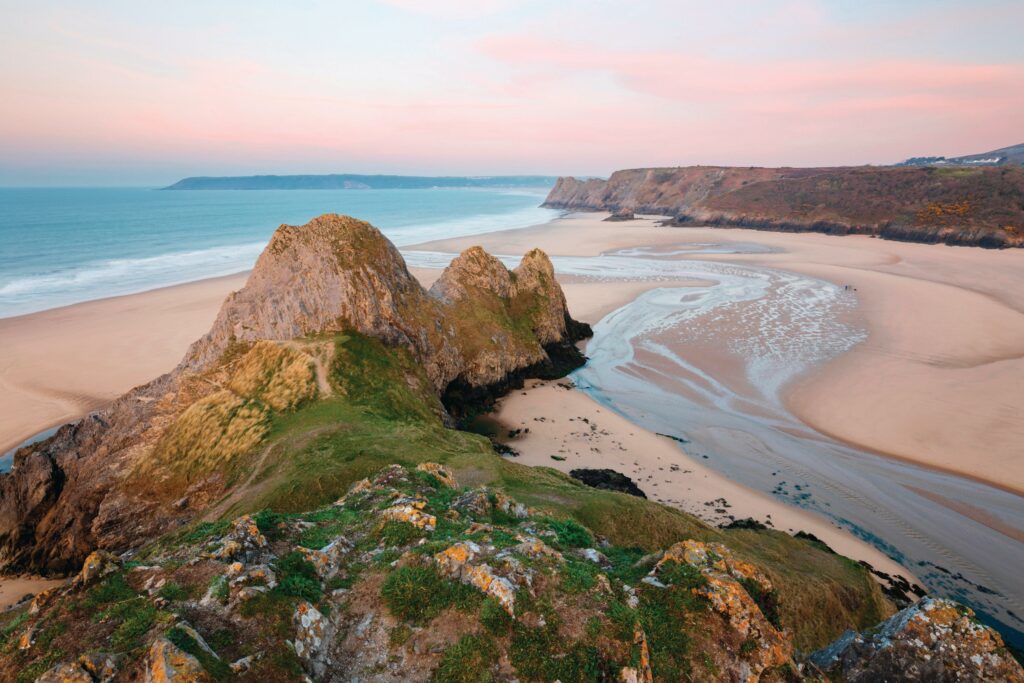
Afraid you might get bored spending a day on the beach? Then Three Cliff Bay (also known as Three Cliffs Bay) is the place for you. Not content with just the one beach, it has a variety to choose from, and you can walk between them at low tide. Since Three Cliff is part of the larger Oxwich Bay, you could even embark on a beach-bagging walk.
Three Cliff also has one of Britain’s most celebrated coastal views: a limestone headland formed of three peaks. There are plenty of undulating dunes, too, and the ruins of a castle above, so bring your paints and brushes along.
Just one word of caution: the rip currents are to be treated with a good deal of caution – reassuringly, a lifeguard service is provided in the summer months.
Useful info
The Three Cliffs Bay Holiday Park occupies an enviable position overlooking the bay. It began as a small campsite in 1948 and now offers yurts and bell tents, too. They also have a small shop open to the public. Getting to the beach from here involves a bit of a workout though. threecliffsbay.com
To reach the beach by public transport, take the train to Swansea, then the 14 bus to Pennards Stores in Southgate, from where it’s a 1.5-mile stroll along the coast path. There’s a car park and toilets by the stores, as well as the Three Cliffs Coffee Shop. threecliffs.co.uk
7 Filey Beach, North Yorkshire
Open spaces
Best for… young families
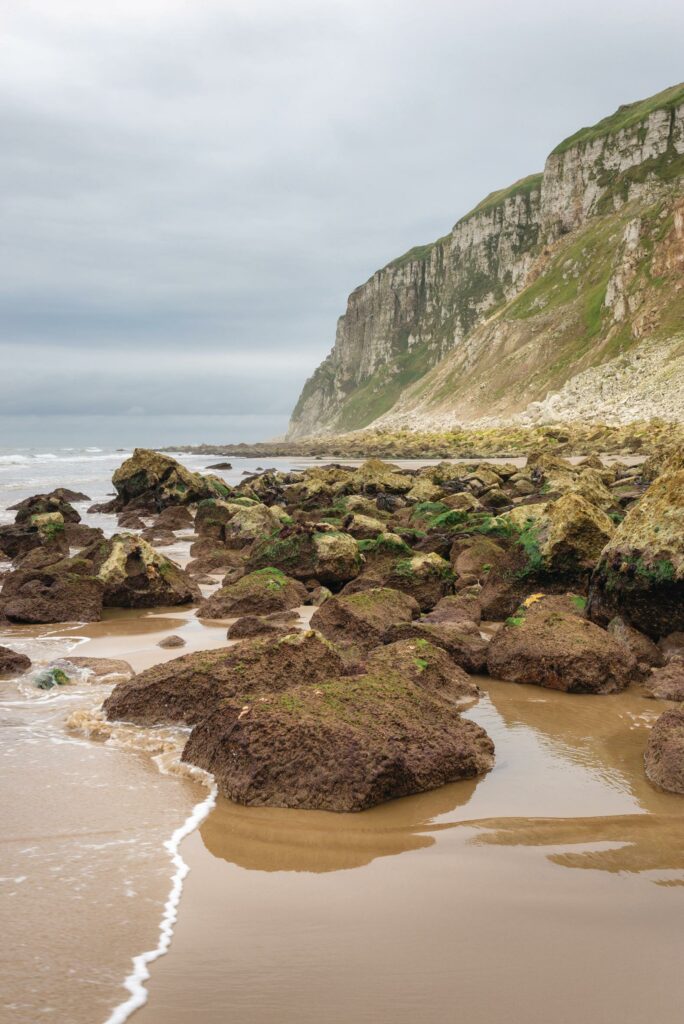
While Scarborough, just up the coast, can get busy, you will find plenty of room to stretch out at Filey. Beyond the fishing port and seaside resort, Filey Bay has a full five miles of sandy beach to explore, with the tide going out around a quarter of a mile. At one end stands the impressive peninsula of Filey Brigg while at the other there’s the amazing Bempton Cliffs RSPB reserve, where around half a million seabirds breed from March to October.
Children will love looking into the rockpools exposed at low tide at the Filey Brigg end of the beach, near the slipway. They will see crabs and a cornucopia of other sea creatures. But do, of course, keep an eye out for the incoming tide, which can be rather rapid.
Useful info
Filey has some excellent traditional tearooms such as the much loved Lighthouse. lighthousetearoom.co.uk
For a longer stay, try the lovely White Rose Guest House. whiterosefiley.co.uk
Filey railway station is just a few minutes’ walk from the beach, and there are several car parks in the town.
8 West Kirby Wirral
Island adventure
Best for… island hopping
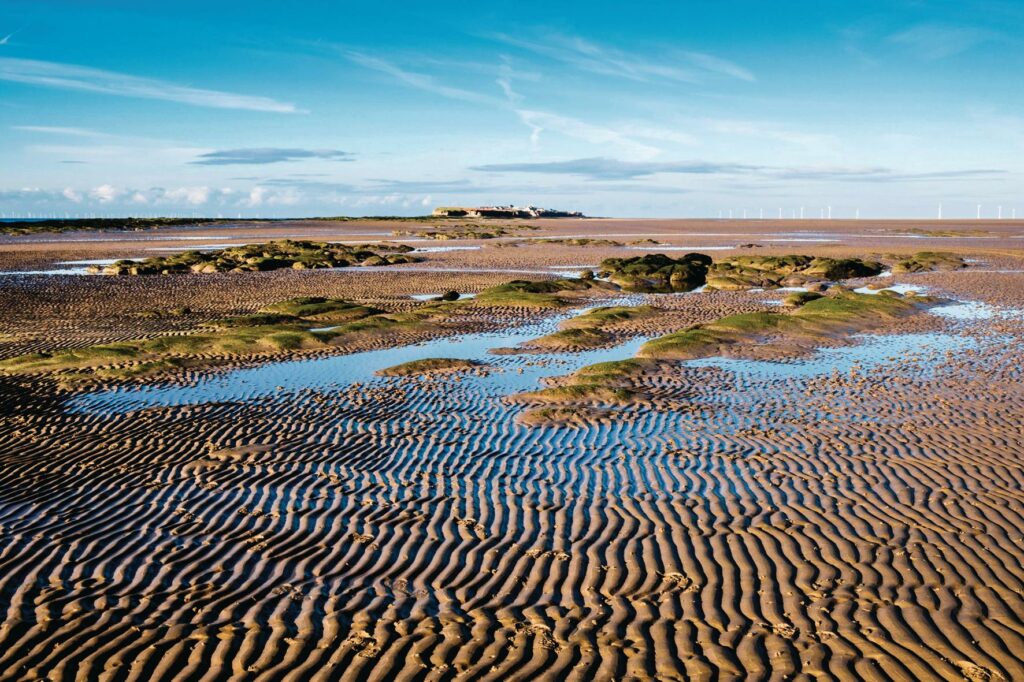
The near two-mile walk out across the sands from West Kirby to Hilbre Island is one of England’s great seaside mini-adventures. After checking the tide times, questing souls set off at low tide with a picnic and head across the seemingly endless sandy expanses of the Dee Estuary towards Liverpool Bay. En route, they pass two islets – Little Eye and Middle Eye – before arriving at Hilbre, a 4.6-hectare isle that is packed with interesting historical buildings.
The Telegraph House, Buoymaster’s House, former lifeboat station and remains of the Seagull Inn (serving boat passengers who once embarked here for Ireland) bear testament to the island’s former lives. Nowadays, the golden beach below is a birder’s delight: summer visitors include Sandwich terns, dunlins, whimbrels and curlews.
Useful info
The Dee Estuary is accessible for about six hours at low tide. Keep to the prescribed route, avoiding dangerous deep mud to the east.
West Kirby railway station and Dee Lane car park are both handy. There are toilets on Hilbre Island and at Dee Lane.
9 Cuckmere Haven, Sussex
Iconically English
Best for… summer walks
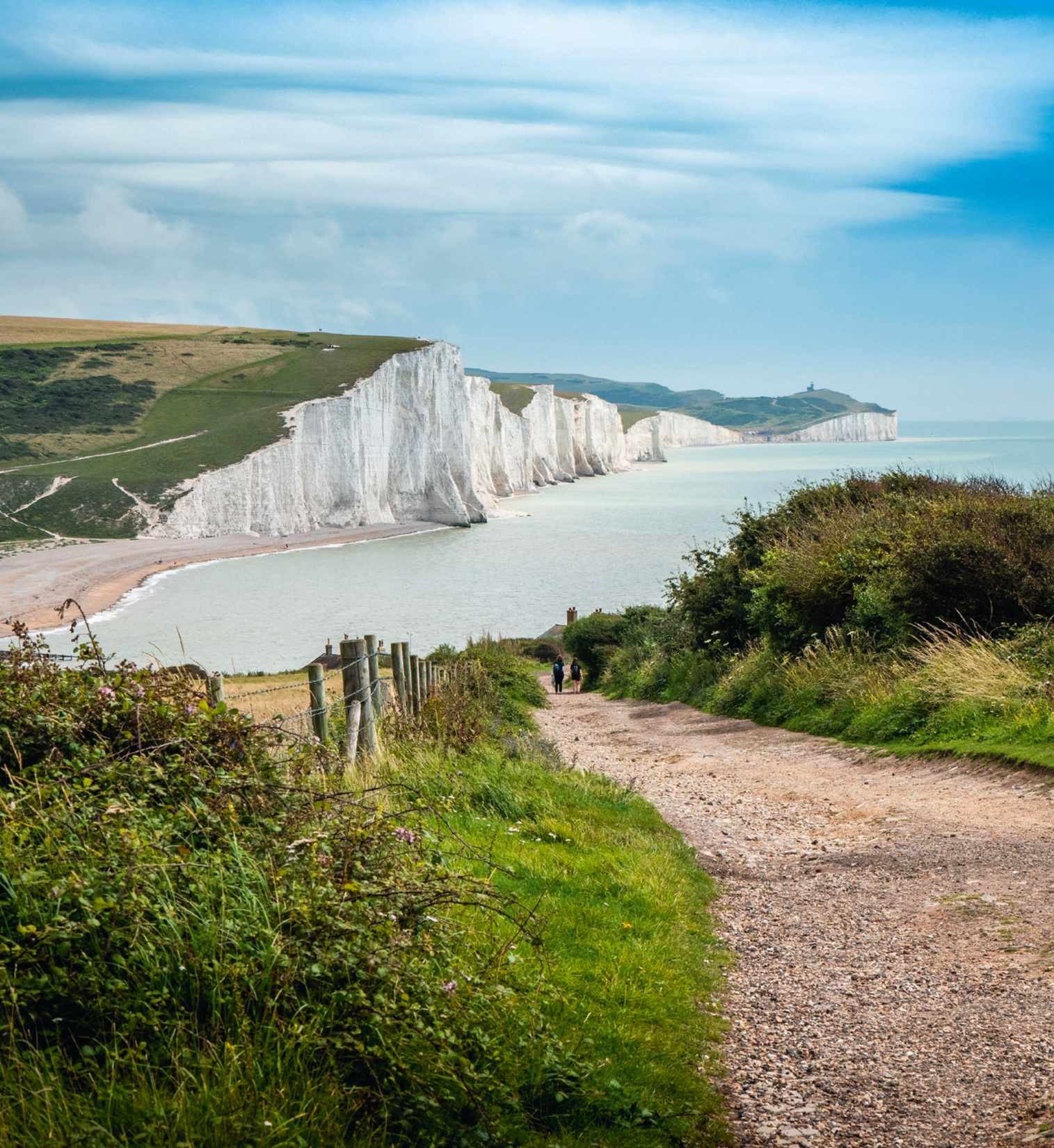
As celebrated locations go, there’s not much that beats the beach at Cuckmere Haven. To one side rises the first (or last) of the Seven Sisters Cliffs, while to the other are the picturesque coastguard cottages that have featured in numberless photographs of those famous sisters.
The nearest road to the beach is at Exceat, about a mile away, where folk park and enjoy a gorgeous walk along the wild loops of the River Cuckmere in the Seven Sisters Country Park. But the nearest railway station – at Seaford – offers an even more spectacular stroll: 2½ miles up and over the cliffs, down through Seaford Head Nature Reserve and past those coastguard cottages to the sea.
Mainly shingle, with patches of sand that reveal themselves when the tide goes out, the beach is dotted with bushes of sea kale, a plant rich in vitamin C. This once made it a prized crop among sailors keen to ward off scurvy on long voyages.
Smugglers once flocked here too. Or perhaps that should be ‘armies of smugglers’ because gangs of up to 300 men would land here in broad daylight with their illicit goods, safe from capture through sheer volume of numbers.
Useful info
The nearest café is the gorgeous Saltmarsh Kitchen. saltmarshfarmhouse.co.uk There’s also the Cuckmere Inn. vintageinn.co.uk Exceat has public toilets.
The nearest car park is at South Hill Barn, south-east of Seaford. Buses to Exceat run from Eastbourne, Brighton, Newhaven and Berwick stations. Cuckmere Camping Pods is nearby. cuckmerecampingpods.co.uk
10 Whiterocks Beach, County Antrim
Surf and seabirds
Best for… water sports
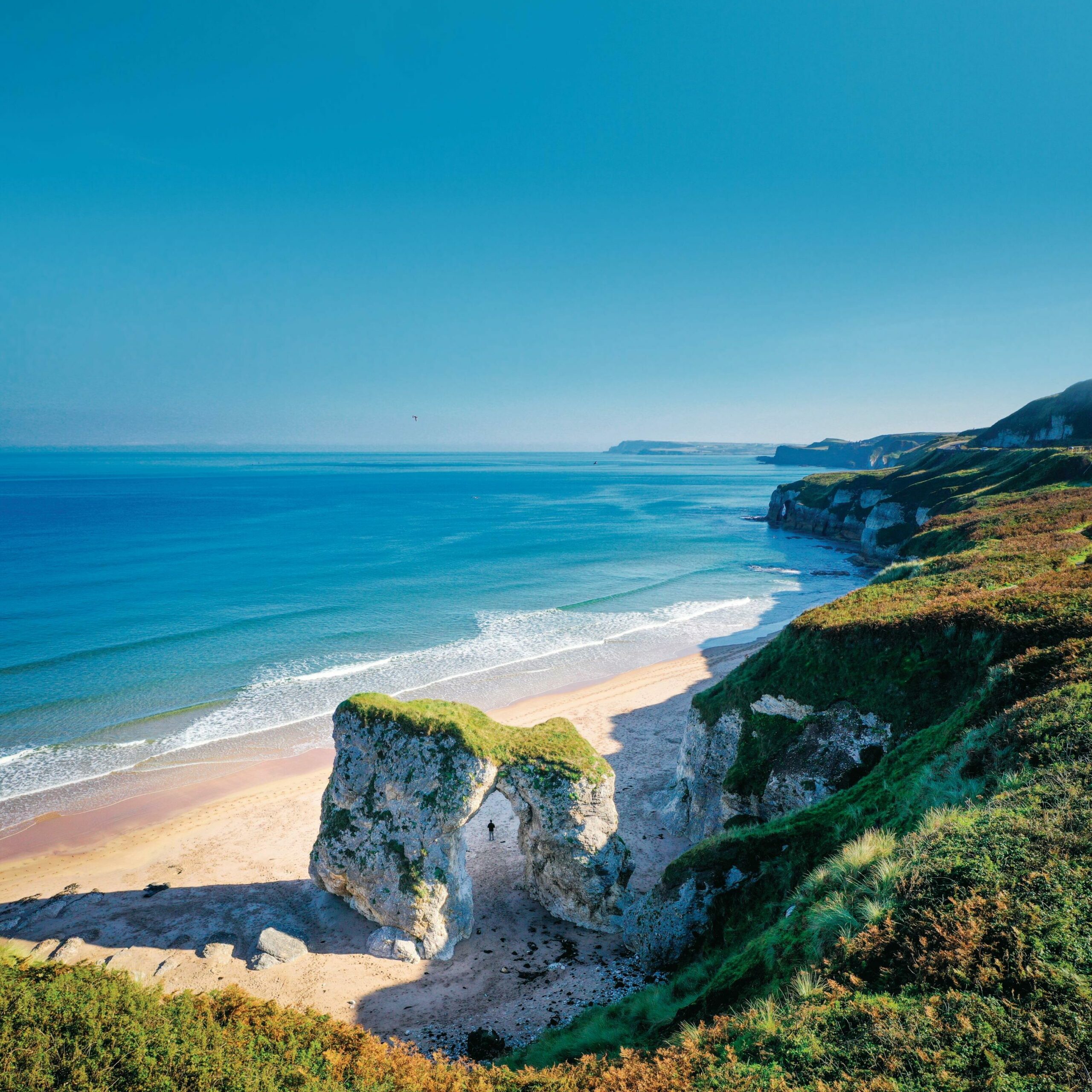
A little to the east of Portrush, on Northern Ireland’s north coast, Whiterocks Beach has become a magnet for lovers of water sports. Surfers and body boarders stampede here, as do paddle boarders and surf kayakers. If you fancy having a go yourself but don’t have the equipment, during the summer you can simply hire some by the beach.
This part of the coastline has been shaped by the sea and the wind, which have lent a sculptor’s touch to the soft limestone cliffs.
There are numerous arches and caves – many giving shelter to seabirds – and you should look out for features such as the Elephant Rock and the Lion’s Paw.
Out to sea there are views of The Skerries, a string of islands where kittiwakes, eider ducks and black guillemots breed. And if you prefer to get your exercise on land, you can head off in either way for a walk along the cliffs on the Causeway Coast Way.
Useful info
Overlooking the sea, the Royal Court Hotel provides the closest accommodation as well as the nearest place to eat, from breakfast to evening meals. royalcourthotel.co.uk For something a little more casual, the Two Twenty café is a 10-minute walk away and prides itself on its tasty, ethically sourced coffee and home baking. gatherattwotwenty.com
The half-hourly 402 bus runs to Whiterocks from Coleraine, which enjoys a direct rail service to Belfast. There are lifeguards at the beach in July and August (11am–7pm), as well as a car park, toilets and showers.